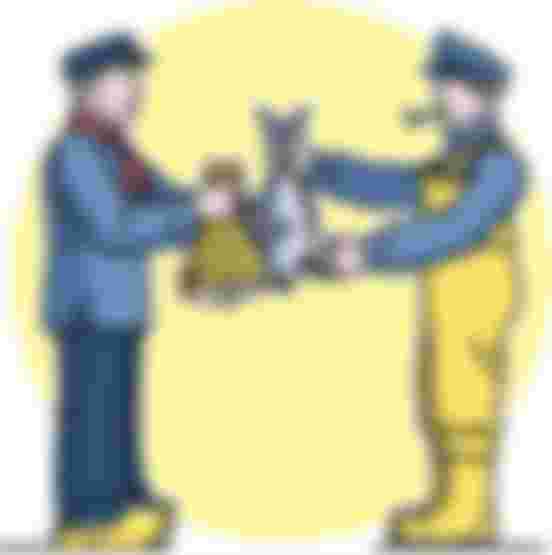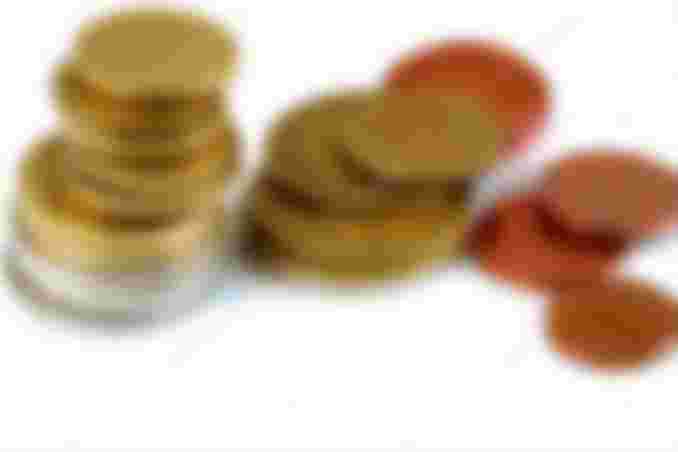Evolution of Money is probably one of the biggest invention in human history.The money was not invented but it evolved with passage of time according to the changing requirements of economies.It is not a result of brain storming of some economist rather there is a long process of evolution since start of civilization to this modern complicated credit system.

Barter System
A barter system is an old method of exchange. This system has been used for centuries and long before money was invented. People exchanged services and goods for other services and goods in return. ... The value of bartering items can be negotiated with the other party.
Advantages
Some of the advantages of Barter system are:
It is a simple system free from the complex problems of the modern monetary system.
The problems of international trade, like foreign exchange crisis and adverse balance of payments, do not exist in the barter system.
Personal and natural resources are perfectly utilized to meet the requirements of the society without involving any wastage.
Disadvantages
Besides the above mentioned advantages, there are also certain disadvantages to the system. These include:
Double Coincidence of Wants
Absence of Common Measure of Value
Lack of Divisibility
The Problem of Storing Wealth
Difficulty of Deferred Payments
Problem of Transportation

Commodity Money
We can define Commodity money as a physical good that consumers universally use to trade for other goods. In other words, it is like the money we use today, but has an actual value. For example, gold was used as money, but also in the manufacturing of jewellery. So it had value outside its use as a medium of exchange. In economics, this is known as ‘intrinsic value’.
Commodity money is unique in the sense that it is the only form of money that has an underlying value. Even though we no longer use commodities such as gold as a form of money; it still has value as jewelry or gilding. We can see, touch, and feel commodity money – it is physical. Its underlying value ensures that people trust it. That means it has value in and of itself, with people trading it freely in the knowledge that someone will accept it.
The history of commodity money extends beyond centuries and millennia. In fact, its origins are virtually impossible to accurately determine. Nevertheless, there are records that indicate activity during the period 700-500BC when gold became a common form of money. During this period, Lydian merchants produced a gold coin mixed with silver; otherwise known as electrum. Their aim was to help improve the efficiency of trading between countries. It was a useful store of value, it was durable, and it was widely accepted between nations. Later, in 550 B.C., under the order of King Croesus of Lydia, it went into full circulation.
We have already seen what commodity money is and why people trust it, but let’s dive in and see what characteristics it has.
A. Durable- Commodities such as meat would not be effective as they go bad over time. Similarly, metals such as iron would not suffice as it rusts easily. If the commodity cannot retain its intrinsic value, then the trust in it won’t last.
B. Divisible/Measurable- We have to have a specific way of measuring money. The creation of units of measurements such as ounces and pounds paved the way for such. As a result, we are able to purchase different goods at different prices. If we cannot measure money, we cannot measure how much we are willing to pay. If there was only a $50 note in circulation; it makes it incredibly difficult to buy something at $1.
C. Easily Exchangeable- Nobody wants the inconvenience of taking a cow to market. It is far more convenient to use gold coins that are much lighter and easier to carry. The commodities that have historically taken off are all easy to trade and convenient.
D. Rarity- A commodity money has to be rare in the fact that the supply is limited. Without such, money can become almost unlimited – thereby leading to massive levels of inflation. Nevertheless, the money supply has to still be able to react to increasing economic output. That is to say, the commodity supply must be able to react to increasing demand. So when the economy starts to grow; the commodity must be able to supplied and represent the new goods in the market.

Metallic Money
Money made of metal is called metallic money. In the beginning the pieces of gold and silver were used as money but it did not solve the complicated problems of exchange. It was very difficult to I measure the value with these jaw pieces of metal. Another problem was transportation and storage of precious metals. This problem was solved by making standardized coins. In the beginning full bodied coins of gold and silver were introduced but latter on these were replaced with token coins. Now a day’s different alloy are being used for minting of coins.
The metallic coins have a specific weight and shape. Coins are only used for smaller retail payments because it is difficult to count, transport and store them.

4. Paper Money
Paper bills were first used by the Chinese, who started carrying folding money during the Tang Dynasty (A.D. 618-907) — mostly in the form of privately issued bills of credit or exchange notes — and used it for more than 500 years before the practice began to catch on in Europe in the 17th century. While it took another century or two for paper money to spread to the rest of the world, China was already going through a fairly advanced financial crisis: the production of paper notes had grown until their value plummeted, prompting inflation to soar. As a result, China eliminated paper money entirely in 1455 and wouldn't adopt it again for several hundred years. Another not-so-well-known fact: the word cashwas originally used to describe the type of round bronze coins with square holes commonly used in the Tang Dynasty, called kai-yuans.
In the fourth stage of the evolution of money paper money was discovered. It is believed that the start of paper money was issuance and acceptance of receipts of gold smiths who were acting as money lender in old Iraq.
These goldsmiths were rich, respectable and were men of repute. They used to keep the valuables of the people in the safe rooms and issued receipts as a proof for the goods stored. These certificates became a convenient credit Instruments and were freely used for borrowing and lending and making payment. In the 19th century commercial banks started issuing their own notes of different colors and denominations.
It created confusion and were not generally acceptable. Central bank removed this confusion by taking over the power of issuing bank notes. In the beginning the paper money was fully convertible into full bodied gold coins. During the period between the two world wars, it became difficult to convert the paper money into gold. Now almost all the countries issue currencies according to the monetary requirements of the economy and government provides securities for issuance of currency.

5. Credit Money
In the present day modern economies or bank money is used for making personal business payments. In the developed countries, transactions are taking place with the help of deposits or checking accounts with paper money. Demand deposits or money sited in current accounts are easily convertible cash, therefore they are convenient and safe.

6. Electronic Money
Today the invention of computer and its application, the form and shape of business are changing fast. The concept OF commerce is gaining vast popularity. The mode payment is being transformed from cash or quest to electronic transaction from one account another. This form of electronic payment is early referred to as electronic money. There are many problems in this type of transactions, but it aiming popularity day by day. i evolution of money has not come to an end, it will, never come to an end.. As economies of the world are changing features and shapes, money is also changing its m with the due course of time. Globalization of the anomies and expansion of e-commerce has given new dimension to modes of payment and has angled the nature and features of money.





